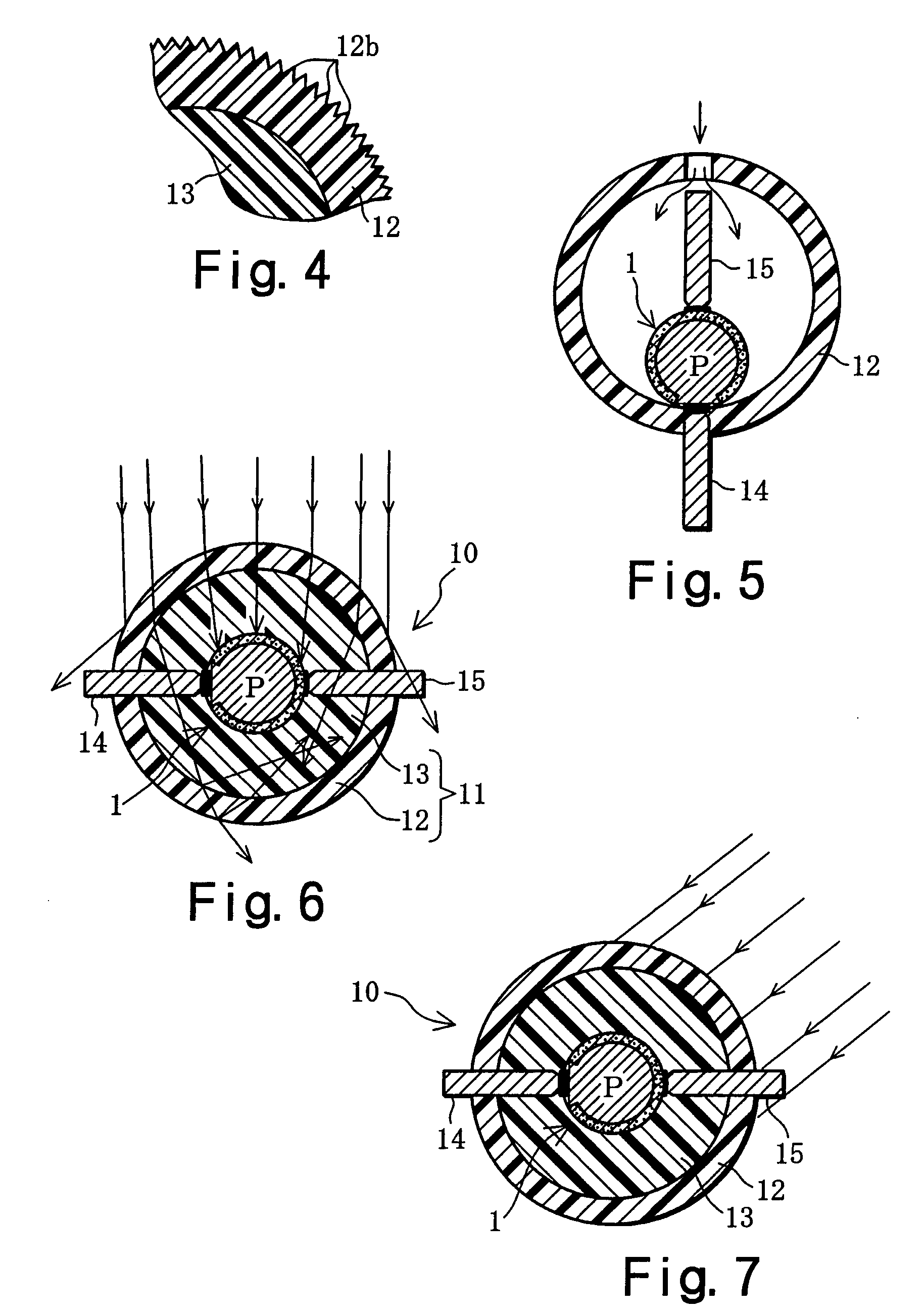Light receiving or emitting semiconductor apparatus
a technology of light-emitting semiconductors and semiconductor modules, which is applied in the direction of electrical devices, semiconductor devices, photovoltaic energy generation, etc., can solve the problems of large semiconductor modules, increased manufacturing costs, and increased manufacturing costs, and achieves the effect of lessening the brightness of light radiated from the emission sour
- Summary
- Abstract
- Description
- Claims
- Application Information
AI Technical Summary
Benefits of technology
Problems solved by technology
Method used
Image
Examples
embodiment 1 (see figs.15 to 17)
Other Embodiment 1 (See FIGS. 15 to 17)
[0075]Next, descriptions will be made on another embodiment of a solar panel 50 in which many of the solar cells 1 are incorporated. This solar panel 50 corresponds to a semiconductor apparatus. With the solar panel 50 shown in FIGS. 15 to 17, a plurality of spherical solar cells 1 are arrayed in a matrix of a plurality of rows and a plurality of columns, a conduction connection mechanism is provided for electrically connecting in parallel the plurality of solar cells 1 in each row or column, and there is provided an outer shell member 51 comprising a plurality of substantially spherical outer shell components 52 that cover the plurality of solar cells 1, and a flat component 53 formed integrally with the plurality of outer shell components 52.
[0076]The solar cells 1 are located at the center of the outer shell components 52, the outer shell components 52 cover the outer surface of the solar cells 1 with a light-transmitting wall component, and...
embodiment 2 (see figs.18 to 21)
Other Embodiment 2 (See FIGS. 18 to 21)
[0083]Next, descriptions will be made on a solar panel 60 in which many of the solar cells 1 are incorporated into a solar string 61, and these are assembled into panel form. This solar string 61 corresponds to a semiconductor apparatus, and this solar panel 60 also corresponds to a semiconductor apparatus.
[0084]As shown in FIGS. 18 and 19, the solar panel 60 comprises a case 62 made of a transparent synthetic resin, and five (for example) solar strings 61 housed in this case 62. The case 62 consists of five integrally-molded, substantially cylindrical string holders 63 capable of holding the solar strings 61, and a flange 64 is formed at the lower end of each of the string holders 63. As shown in FIGS. 20, 21, the solar strings 61 have a plurality of spherical solar cells 1 arranged in a column, a conduction connection mechanism 65 for connecting these solar cells 1 in parallel, and an outer shell member 66 that has a cylindrical outer surface...
PUM
 Login to View More
Login to View More Abstract
Description
Claims
Application Information
 Login to View More
Login to View More - R&D
- Intellectual Property
- Life Sciences
- Materials
- Tech Scout
- Unparalleled Data Quality
- Higher Quality Content
- 60% Fewer Hallucinations
Browse by: Latest US Patents, China's latest patents, Technical Efficacy Thesaurus, Application Domain, Technology Topic, Popular Technical Reports.
© 2025 PatSnap. All rights reserved.Legal|Privacy policy|Modern Slavery Act Transparency Statement|Sitemap|About US| Contact US: help@patsnap.com



